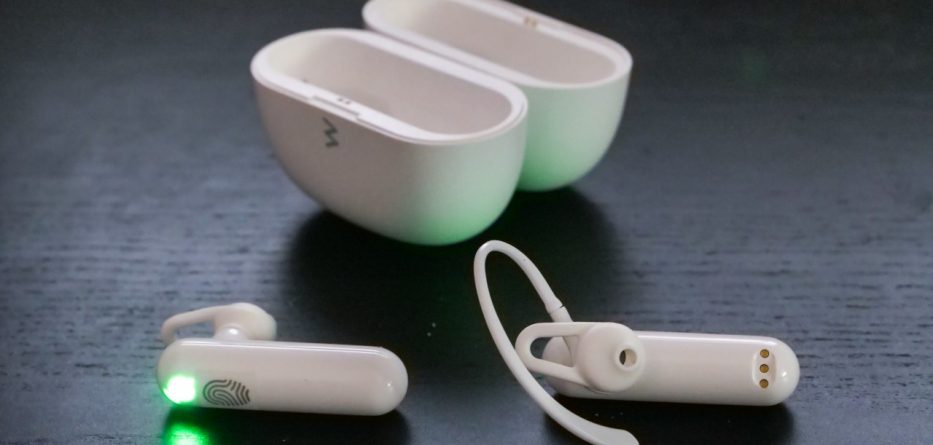The Babel fish, from Douglas Adams’ superb A Hitchhiker’s Guide to the Galaxy, is one of those thoughts that sticks in your brain. Similar to the fish itself, really; in the book, it’s a small yellow fish you shove into your ear that takes up home and has the amazing ability to instantaneously translate whatever anybody around you says into your own language, irrespective what galaxy they’re from or what types they are.
With a Babel fish in your earhole, the story goes, you can understand anybody else completely. Which you might think would be a delightful thing for universal harmony, but Adams says that “by efficiently removing all barriers to communication between different cultures and races, it has caused more and bloodier wars than anything in the history of creation.” Ah well, you can’t win them all.
So back to the non-fiction world. Humanity has been struggling for a real-life Babel fish in the form of translation technology, and the growth of deep learning in current years has seen machine translation develop in quantum leap. Lately, we’ve had our hands on a couple of attractive hand-held translation devices, but the WT2 Plus translation earbuds are the first we’ve tried that adjust right there in your ear like a Babel fish and attempt to let real-time conversation minus the need to press buttons.
From attractively-named Chinese company Timekettle, the WT2 Plus is a pair of earbuds that are intended to be used by two different people. You put one in your own ear and give the other to your chat partner. This puts noise-reducing, beamforming microphones near both of your mouths, which helps separate which of you is speaking, and it paces up the conversation. You don’t have to stop talking while the WT2s are conveying their translations into the other person’s ear.
The WT2 set has three modes. There’s Touch mode, in which you each take turns fingering a button on your earbud to tell it you’re talking. There’s Speaker mode, in which you use an earbud and your chat partner only talks into your smartphone. And there’s “Simul” mode, in which you try to have as normal a conversation as possible, and the earbuds rush to try to keep up.
YOU MAY LIKE: Ambassador: The Smartest Real-Time Wearable Translator?
One needs to connect these things to your smartphone so as to use them, and the phone’s screen turns out to be convenient. You know the tool by now with online translation services; they can be hit or miss, both in how they’ve got you and how they pick to translate you. So it’s very convenient having the screen in between you as you talk, so at least both of you see what the machine thinks you said before interpretation.

The WT2 software presently supports 36 different languages, but more remarkably it can also be set to account for about 84 different accents. There are 14 different accents for English only, from Ireland to Nigeria to Singapore, for example, and approximately 20 versions of Spanish, comprising Spain itself and a collection of Central and South American countries.
I was able to test the WT2 Plus system in talk with a Chinese speaker, and overall the experience was pretty good, with the speaker’s intention coming through evidently in most cases. Talk in Simul mode is a certain step forward from pressing buttons on a hand-held device or playing with a smartphone, but the interruption is still enough to make things feel unconnected, and it’s difficult to get much of an energy going. But it pays to remember, you’re speaking in two different languages and comprehending each other, and that’s some kind of dreamlike.
It’s not without its glitches, which begin almost right away with the fact that these earbuds just don’t fix very well in any of the ears I’ve tested them in. “Were these planned for giants?” my partner asked as they came out for the tenth time. There’s a set of over-ear loops added, designed to help tackle this problem, but they have to be detached to fit the WT2s into their carry case, and, actually, in this day and time, it shouldn’t be too much of a task to design earpieces that fit in-ears.
Furthermore, the Simul mode cannot manage external noise. In our house, that’s more or less continuous in the form of two rug rats, who had to be directed out of the room before any type of conversation became possible.
The third notable issue is that the WT2 system can only attend to one voice at a time, meaning that it will select one of the speakers in a conversation. While that person is talking, or the smartphone is translating, or a translation is being readout, it’s not paying attention to you. That can make it difficult to get a word in its side if you’re not the one with the priority earbud. If you try to fix this issue by moving to Touch mode, the touch sensors on these earbuds can be hard to locate, and the “touch once to listen, touch again to translate” control scheme isn’t immensely intuitive.
CLICK HERE TO BUY THE WT2 PLUS
Yet, it’s by no means bad, and if you make your sentences properly (harder than you’d think in a relaxed conversation), the system translates and transmits them well. I also welcome the fact that conversation histories are stored individually and don’t appear as you begin a new conversation.
If you have a second set and a great smartphone, these things are skilled of translating across multiple languages concurrently, with a maximum of four people connected together. That would’ve been manageable in one specific share house I remember living in some 20 years ago, full of German, French, Irish, Italian, Australian and Japanese drifters. We had seven or eight different translation dictionaries in the living room, and while we definitely seemed to understand each other better the more we drank, a tool like this could’ve got us into the United Nations.
The WT2 Plus earbuds come in a round charging case that separates in half so you can keep half for yourself and you can give one half to your conversation partner. The case snaps together magnetically, in either open or closed orientations. It’s slightly big for a pocket and the shape is a touch awkward to balance on a flat surface, but it does the trick.
At a price of US$199.99 per pair, the WT2 Plus translator earbuds are inexpensive than standalone hand-held devices. Contrariwise, they do necessitate that your phone has a data connection, so if you’re moving, that’s something you’ll need to consider. Many of the separate devices have built-in international SIM cards with data plans, which no doubt adds to their higher prices.
Compared to the other gadgets I’ve tested, I would say the WT2 Plus earbuds work more than fine enough to endorse them. With the earbuds in, you can waste less time looking at a device and more looking at who you’re speaking to, which feels like a significant shift. Whichever online AI translation services Timekettle has picked seem to do a solid job, at least in the language blends I’ve tried.
Keep in mind, the chief struggle these and other translation devices need to pull off against really is the Google Translate app, which is free and works on pretty much any smartphone you already possess, even if it doesn’t fit in your ear. Translation-specific devices do propose a more delightful experience, but it’s hard to match with free.
And coming back to the fictional Hitch Hiker’s Guide To The Galaxy’s Babel fish we’re imagining will one day be probable, these types of devices are still in their infancy. There’s a lot in the offing, bits of sentences sometimes get chopped off, and sometimes you simply get misheard. So, while they can absolutely open doors to verbal communication across cultures, hopefully, they won’t start any intergalactic wars.









